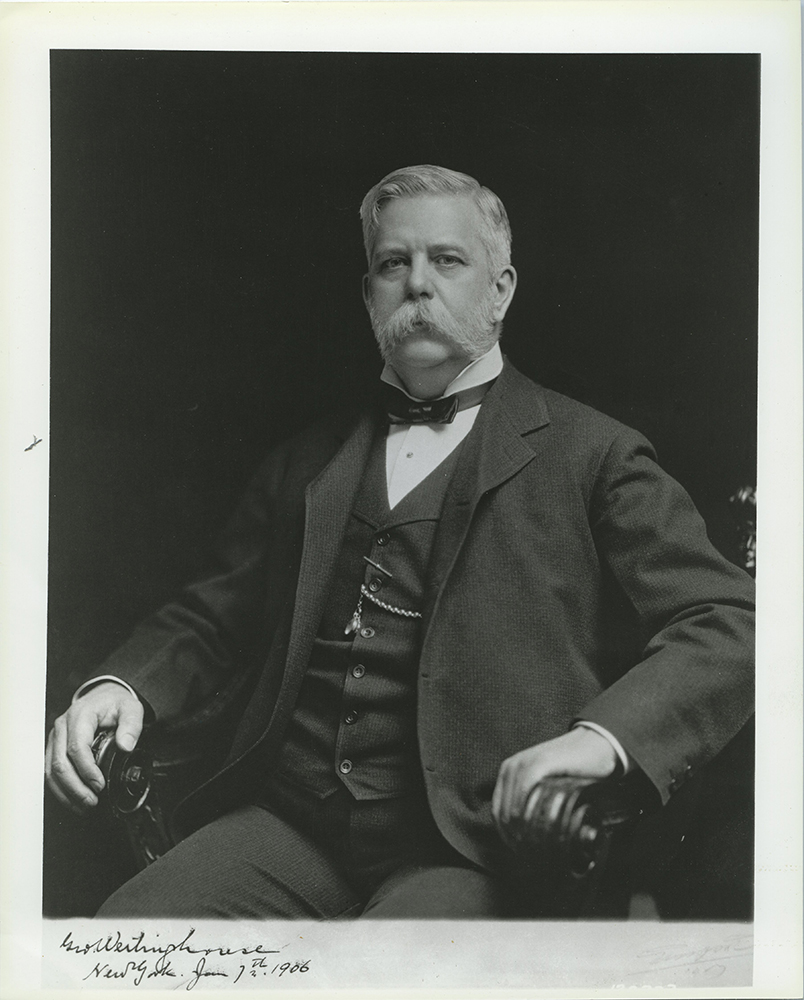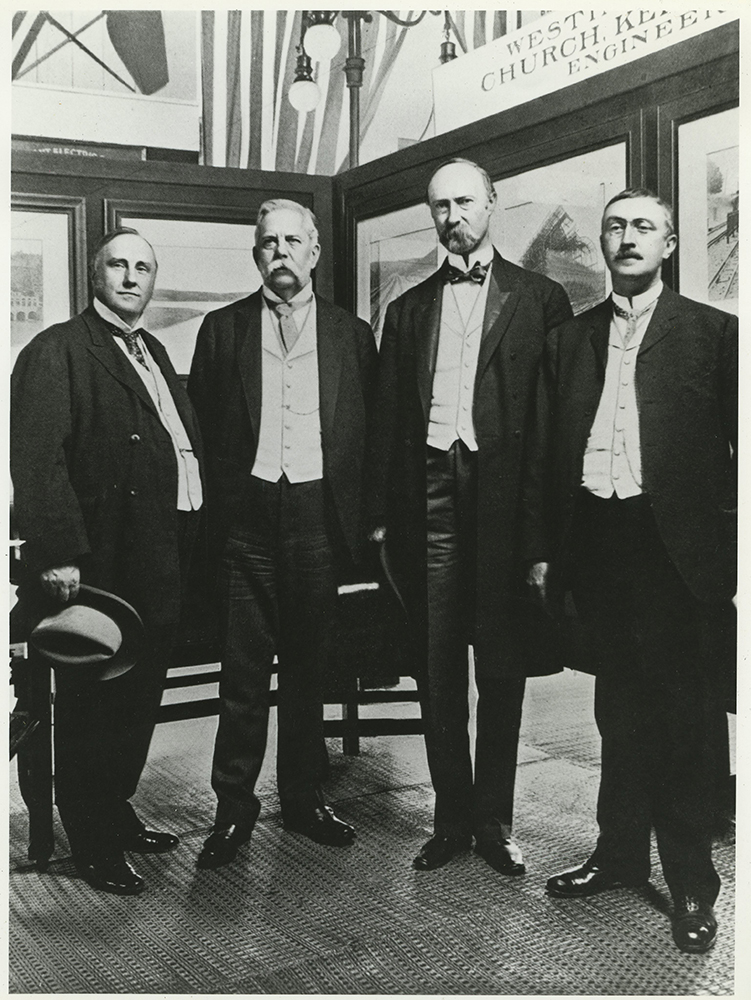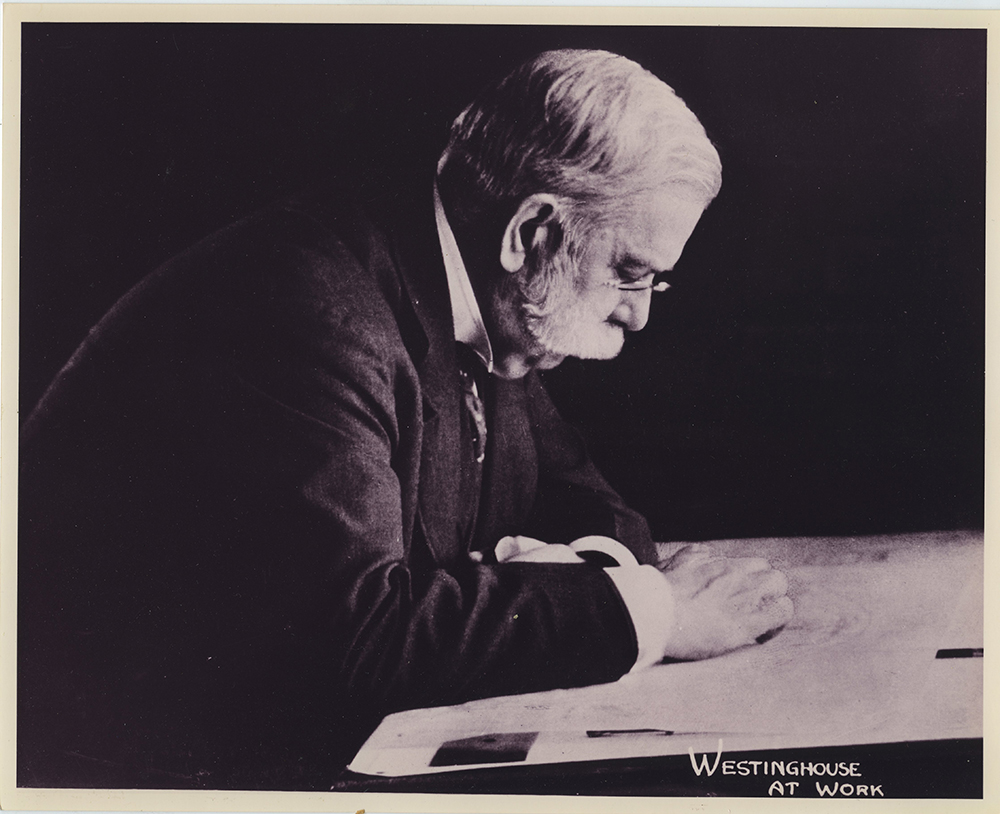
One of the most recognizable images of George Westinghouse Jr. depicts the inventor and businessman seated at a drafting board, a piece of paper in front of him and glasses perched on his nose. He is bent over the table, his eyes cast down at his work, with his thick, white whiskers obscuring the expression on his face. This is not an official portrait or a pose, nor is it an image taken to commemorate an opening or an exhibition. It is, instead, an everyday photograph of a white-haired, turn-of-the-century engineer sketching away. There is a reason the image is called, simply, “Westinghouse at Work.”
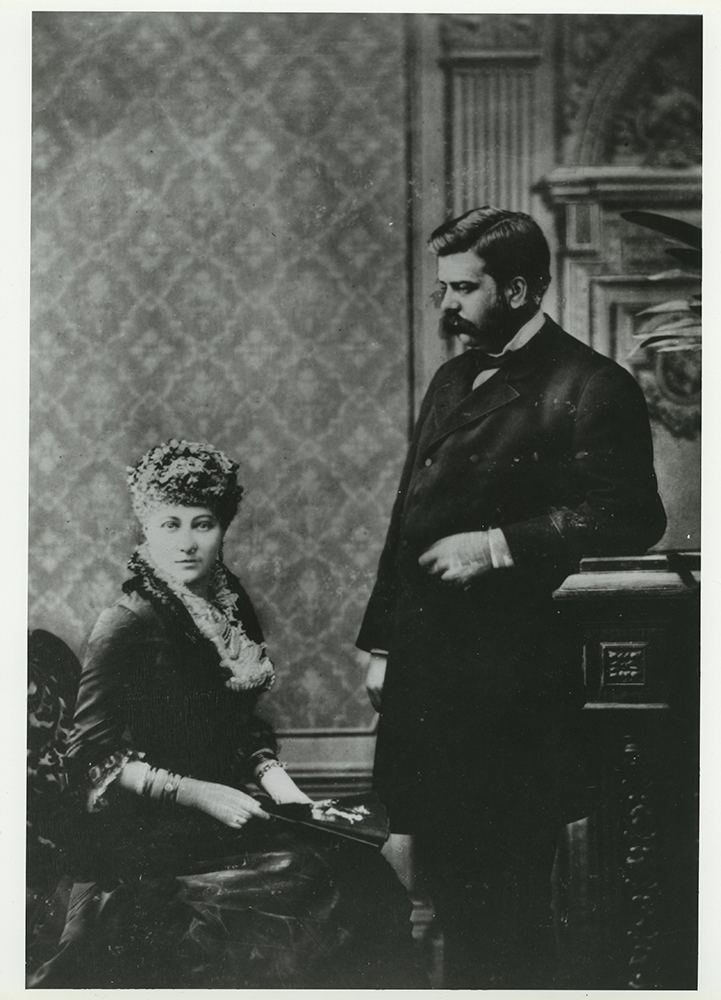
How did this photograph come to be? George Westinghouse famously didn’t like having his picture taken. Many other images of Westinghouse are family portraits, such as with his wife, Marguerite Erskine Walker Westinghouse, and official images at events with acquaintances.
Contained within the Heinz History Center’s Detre Library & Archives’ George Westinghouse Museum Collection (MSS 920) are copies of a photograph taken at the 1906 International Railway Conference where Westinghouse met the Vice President of the United States, Charles W. Fairbanks. Another oft-copied photograph is an official portrait also taken in 1906. It depicts Westinghouse seated in an elegantly-carved wooden chair, exuding power, wealth, and comfort. Two marble busts, completed in 1925 and 1957, respectively, were based off of this official pose.
According to H.T. Herr, the former general manager at the Westinghouse Machine Company’s East Pittsburgh Works, the “Westinghouse at Work” photograph was commissioned by a reporter from the New York Times who wanted a picture of George Westinghouse working “with his hands.” Knowing that Westinghouse would reject such a request, Herr coordinated with East Pittsburgh plant photographer Charles F. Yessel to take the picture without their boss’s knowledge. They planned it carefully: while Westinghouse made his morning rounds in the plant’s main machine shop, Yessel would hide in an adjacent lavatory, push the door open slightly, and capture an image of Westinghouse seated at a drafting board. Herr would then draw Westinghouse to another room so that Yessel could escape, unseen.
In the end it wasn’t Yessel who captured the famous image. It was his sixteen-year-old assistant, Ed Kilchenstein, who would eventually go on to become the plant photographer at the East Pittsburgh Works after Yessel moved to Westinghouse’s South Philadelphia plant. Kilchenstein made the original negative on Thursday, Oct. 6, 1910. Yessel retouched it before its printing, removing shelving, lamps, and a ghostly image of Herr from the background. According to multiple sources, George Westinghouse forbade the image’s printing after he first saw it, and the original was tucked away by Yessel until after George Westinghouse’s death in March 1914.
Years later, Herr wrote: “The circumstances surrounding the taking of this picture made it a most excellent likeness of Mr. Westinghouse, because it was so natural. I have seen him in this position hundreds of times. However, because he had forbidden it, none of the pictures was used until after his death, in 1914.” (Published in Westinghouse Magazine, November 1934). The History Center’s Westinghouse Museum Collection includes folder with many reproductions of this photograph. This “excellent likeness” was, unsurprisingly, published many times after Westinghouse’s death.
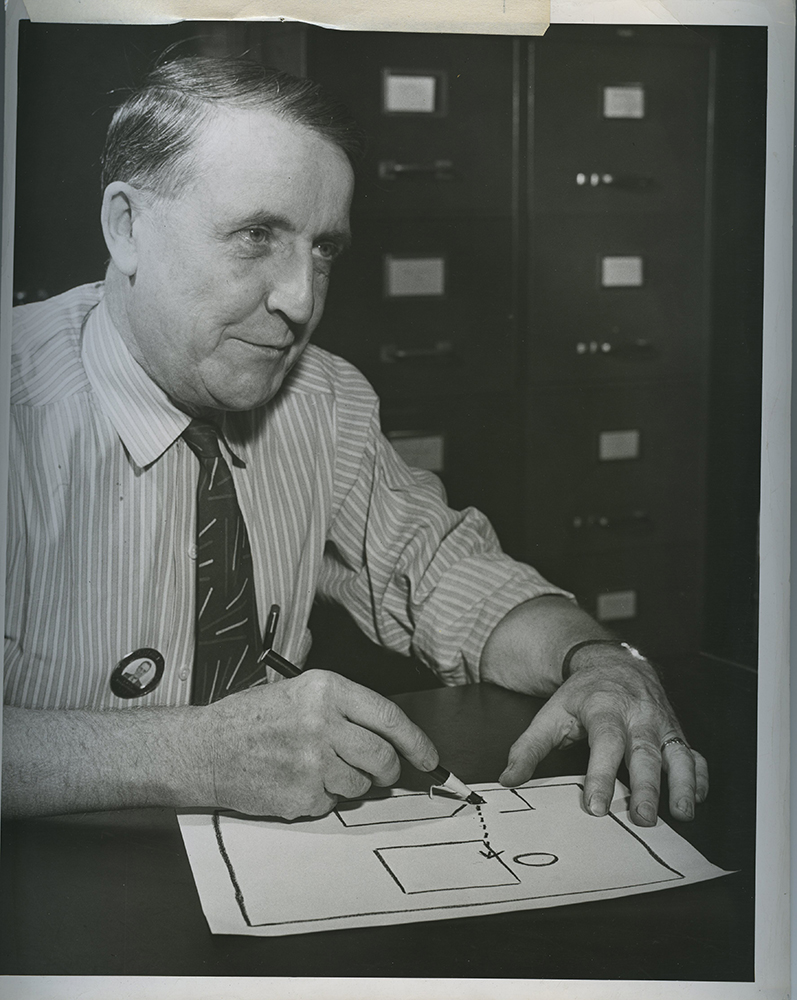
A copy of the Westinghouse Magazine article resides in the Westinghouse Museum Collection alongside an image of Kilchenstein illustrating the layout of Herr’s plan. On a piece of paper in front of him, Kilchenstein drew a circle indicating Westinghouse, a square representing the drafting board, and a dotted line linking the open door with the table top – the line of sight from Kilchenstein’s hideaway to the unaware Westinghouse.
The history of the “Westinghouse at Work” photograph has come to light as processing continues on a project to increase access to collections related to Western Pennsylvania business and industry, funded by a National Historic Publications and Records Commission’s (NHPRC) Documenting Democracy grant. Thanks to this project, these materials – including the “Westinghouse at Work” photograph and Herr’s recollections to Kilchenstein’s own portrait – will be safeguarded and made accessible for current and future generations, preserving the story behind one of the most well-known and well-loved photographs of an influential American and Pittsburgher.
All images are from the George Westinghouse Museum Collection, MSS 920, Detre Library & Archives at the Heinz History Center.
Kate Madison is a NHPRC graduate student intern volunteer with the Detre Library & Archives.
